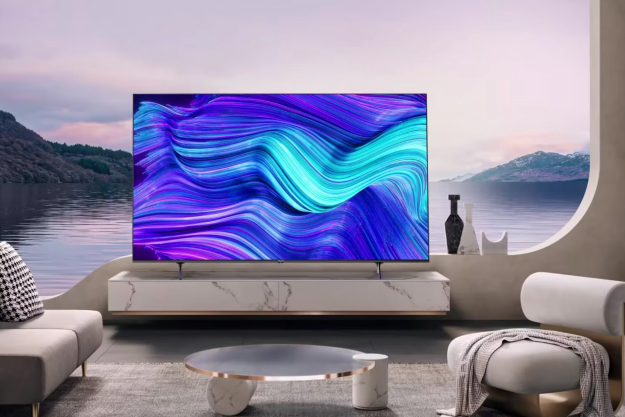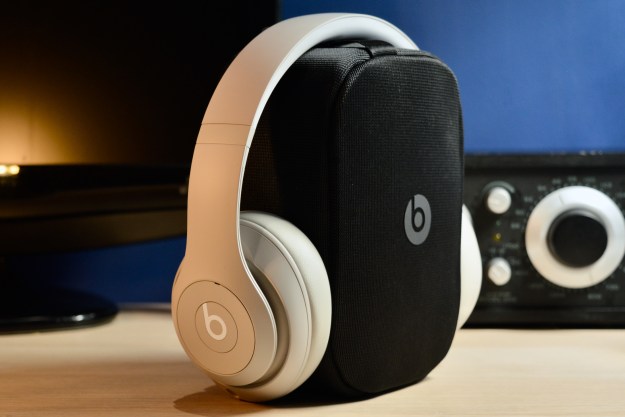You can’t swing a dead cat in the electronics space without hitting a smart TV — that’s just the way it is in 2022. Whether it’s a Roku TV, a set from LG, Samsung, Vizio, or another TV running some other operating system, there’s a high chance that it’s going to connect to the internet. There’s also an even better chance that the platform on which the TV runs deals in advertising.
It’s just the way of the world. And for that reason, you need an ad-blocker on your home network — full stop.
It’s a bit amusing to see folks all up in arms over an ad for Sleep Number beds appearing on a Roku TV manufactured by Sharp, which made the rounds on the /r/cordcutters subreddit during a recent NFL playoff game. Roku tells Digital Trends that whatever caused the ad to appear — whether it was an OS-level thing or a device-specific thing — has “been resolved.”

Ads on ads on ads
Forget for the moment that an NFL broadcast is, itself, full of advertisements in the stadium, on the field, on the screen, and from the broadcasters’ mouths. Still, we watch. And ignore for the moment the fact that Roku basically is now an advertising company that also sells hardware and licenses out its operating system to other manufacturers. Still, we buy the $25 sticks en masse and the inexpensive televisions in droves. Advertising is the price you pay when you don’t pay the price at the register.
You have options. You can choose to buy a product that doesn’t inject advertising on top of content. That’s more expensive, for sure, and can make you feel like you’re being punished. (You’re not.) Or that you have to be an elitist to wash your hands of all those dirty ads. (That’s maybe a little more true.)
There’s another route — one that really should be taught in schools.
There’s a good chance that if you’re reading this, you’re familiar with ad-blockers. (We’ll also ignore for the moment the fact that the website you’re currently reading is funded by ads.) They’re easy enough to implement at the browser level with an extension.
Network-level blocking is where it’s at
If you’re really serious about blocking ads, though, you want to do it at the network level. It’s not as simple an endeavor, but it doesn’t require a degree in computer science, either. The basic strokes are this: You’ll have a device somewhere on your network, and all traffic requests go through that. If something pings on the “block list,” that traffic doesn’t get through. That means things like advertisements won’t show up or maybe that tracking data isn’t disclosed.
That device could be software baked into your router, or it could be a separate device like the Pi-Hole or AdGuard service on a Raspberry Pi.
Because it’s at the network level, it covers any device that’s connected to your network: Phones, tablets, TVs, whatever.
It’s also a bit of a blunt instrument. There are times when things just won’t work. (In addition to ads not loading, which is more of a feature in this case than a bug.) This isn’t a set-it-and-forget-it endeavor. There are times you’ll need to either turn off the ad-blocker to get something to load or work right, or you’ll need to dive in and tweak the block lists and/or white-list servers.

Your experience will differ from someone else’s. In my home, I usually average around 13% of all server queries being blocked. Maybe that’s high, maybe it’s low. It all depends on how many devices you have going through the ad-blocker and what those devices are.
I’m also not surprised that nearly a full 25% of the blocked queries come from a single server from a certain manufacturer. (And that number almost certainly is inflated because the server is blocked — like a toddler yelling for his mother over and over again, while she’s just inches away on the other side of the bathroom door.) That doesn’t mean that all of those queries are ads or spam or are otherwise nefarious. In fact, all we know is that the device is requesting some data from the scribe.log.roku.com server, and that’s it. We don’t know what the data is (and I don’t really care). It’s just that whoever curates the blocklists I use deemed that server worth blocking.
Roku is getting picked on here because it’s a big target, and it’s one that shows up for me, but it’s hardly the only one. Amazon Fire TV does it. Google TV (and Android TV) does it. Phones do it. Tablets do it. Anything and everything that connects to the internet almost certainly connects to an ad server somewhere or some sort of analytics server. Neither of those things are inherently evil.
But if you want to ensure that you’re not going to get advertising on top of your advertising-laden football game, a network-level ad-blocker is a good place to start.
Editors' Recommendations
- 2024 is the year you need to have an antenna for your TV
- Roku teams up with Walmart to let you shop from your TV
- Want to watch Disney+ on your TV? You need this cheap accessory




